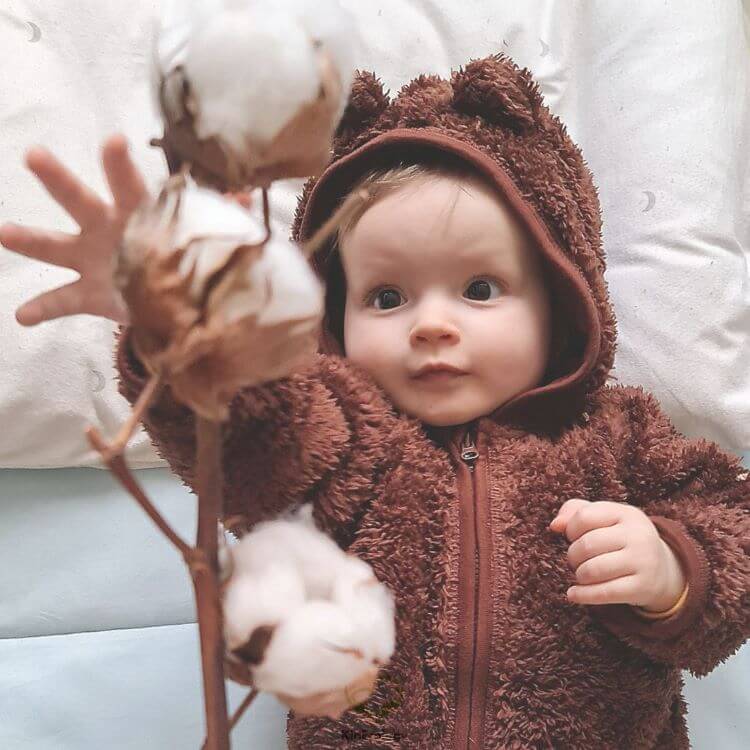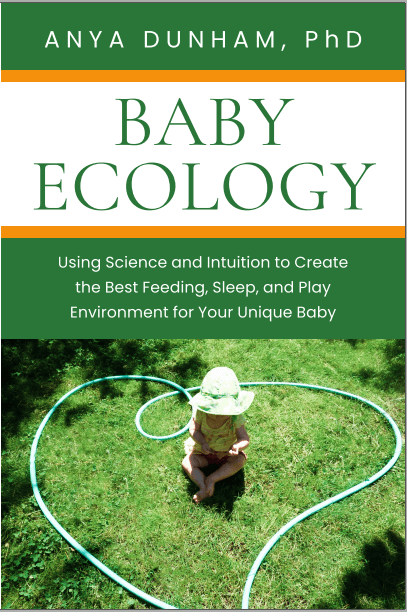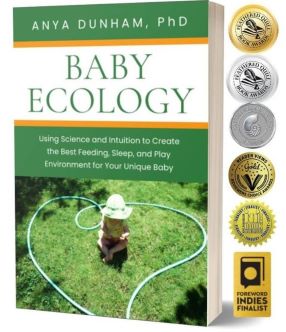Baby Ecology book is here! Learn more
Baby Ecology book is here!
- Home
- Getting Ready Checklist
- baby nursery
- nursery colors
Best nursery colors: Is the 'sad beige babies' trend good or bad?
by Anya Dunham, PhD
What are the best nursery colors? Is the 'sad beige babies' trend detrimental or beneficial for baby's vision development? Let's explore what the studies say.

Have you ever wondered what the best nursery colors are? Is a black-and-white or a bright primary color palette a must in baby's room? Is the “sad beige baby” trend – the modern aesthetic of muted tones in clothing, furnishings, and toys – detrimental to babies’ vision and color perception?
Best nursery colors: Do colors matter to babies?
Here is the research I found on the topic:
📍Newborns’ vision is not fully developed, with limited ability to detect color. However, it improves quite rapidly: by 2-3 months typically developing babies are trichromatic (can detect all colors, although more intense colors are still easier for them) and can scan their surroundings thoroughly; by 6 months they can see almost as well as adults.1
📍Color vision does seem to be affected by experience. At 6 months adjusted, premature babies are more sensitive to contrasts than full-term babies, presumably because they spent more time out in the world. However, adults who had congenital cataracts removed in early childhood appear to show typical color judgments and discrimination later in life. So it seems like even in cases of true color deprivation, humans are able to catch up.2
📍 Subtle early tuning and cultural differences do exist. For example, adults born above the Arctic Circle (who had early experience of the ‘polar night’ when the sun doesn't rise above the horizon for several months) discriminate purple hues more effectively and greener hues less effectively than adults born below the Arctic Circle. We need more studies in different environments and cultures to better understand possible subtle differences in vision development.3
Bottom line
In practical terms, even if you choose a very beige aesthetic for your baby’s nursery, your baby will still experience many colors in your home (even by simply eating fruits and veggies and reading books!) and out in the world (looking at the sky, trees in different seasons, flowers, birds, buildings, people, cars…). Granted, in the early weeks, your baby might not see much of these yet, but that’s the time when seeing and feeling you is what matters most.
So, the best nursery colors probably are the ones you like the most. Have fun!
References
References
1. Slater A (2002) Visual perception in the newborn infant: Issues and debates. Intellectica 34: 57–76
2. Bosworth RG, Dobkins KR (2009) Chromatic and luminance contrast sensitivity in fullterm and preterm infants. Journal of Vision 9(13): 15.1-1516
3. Skelton AE, Maule J, Franklin A (2022) Infant color perception: Insight into perceptual development. Child Development Perspectives 16(2): 90-95
Using hundreds of scientific studies, Baby Ecology connects the dots to help you create the best environment for sleep, feeding, care, and play for your baby.
Warmly,
Anya


